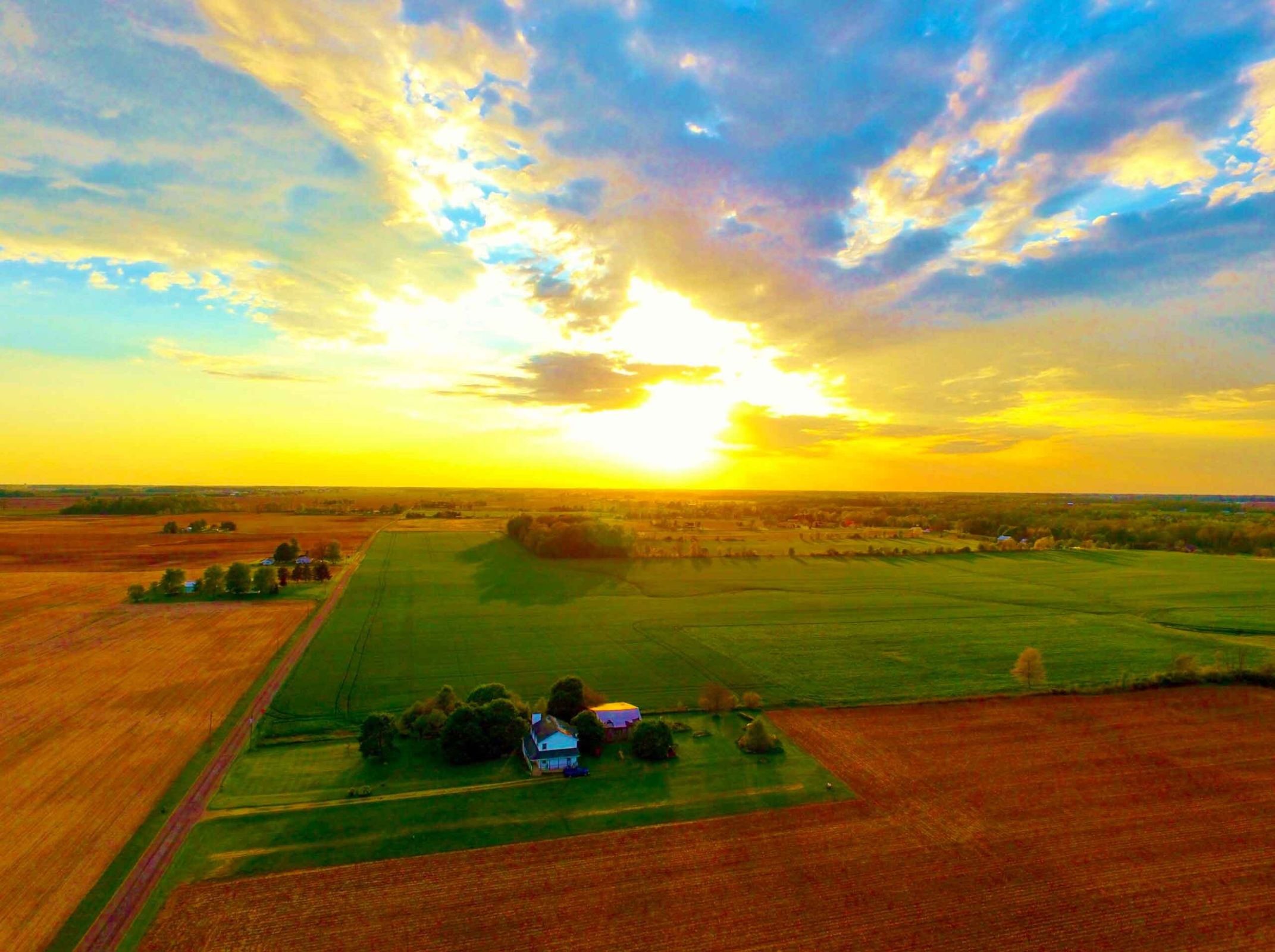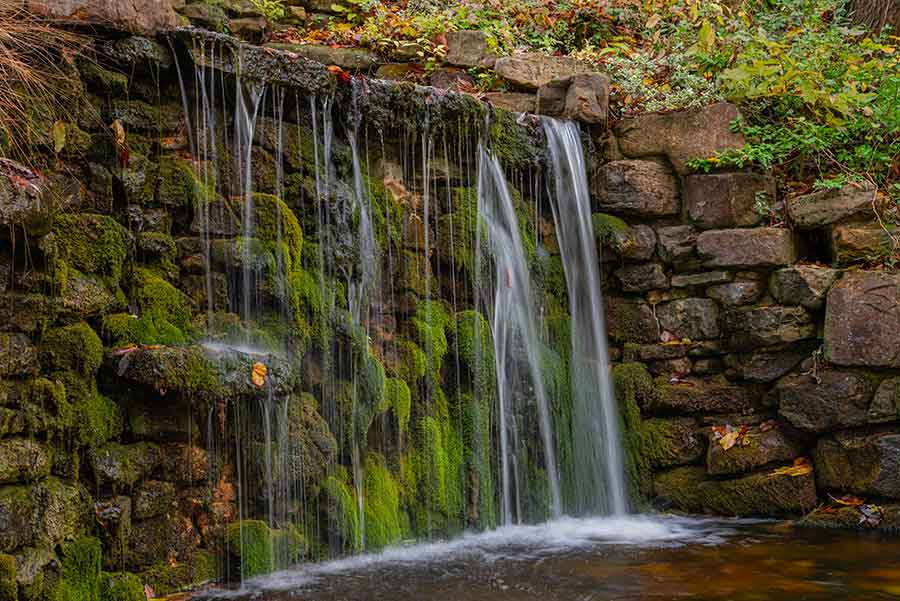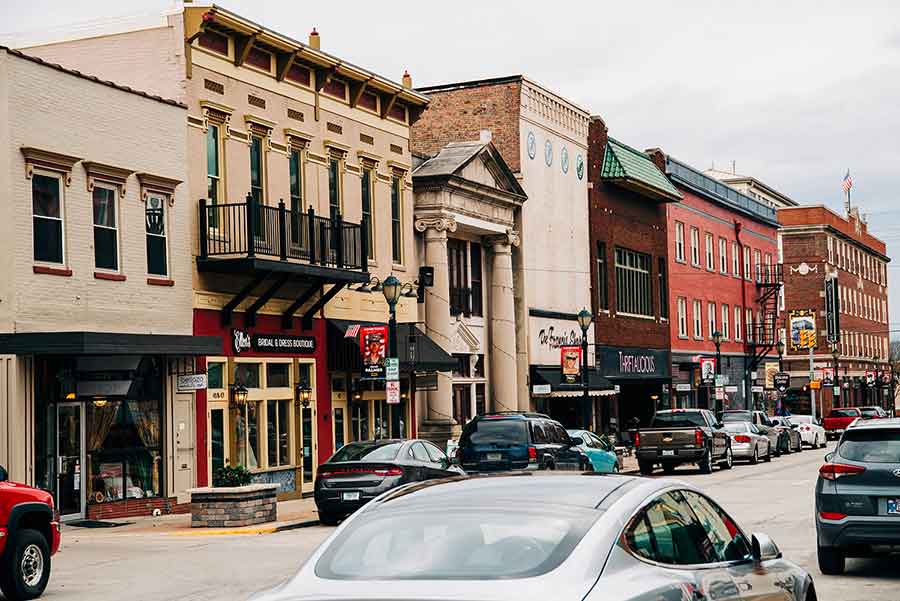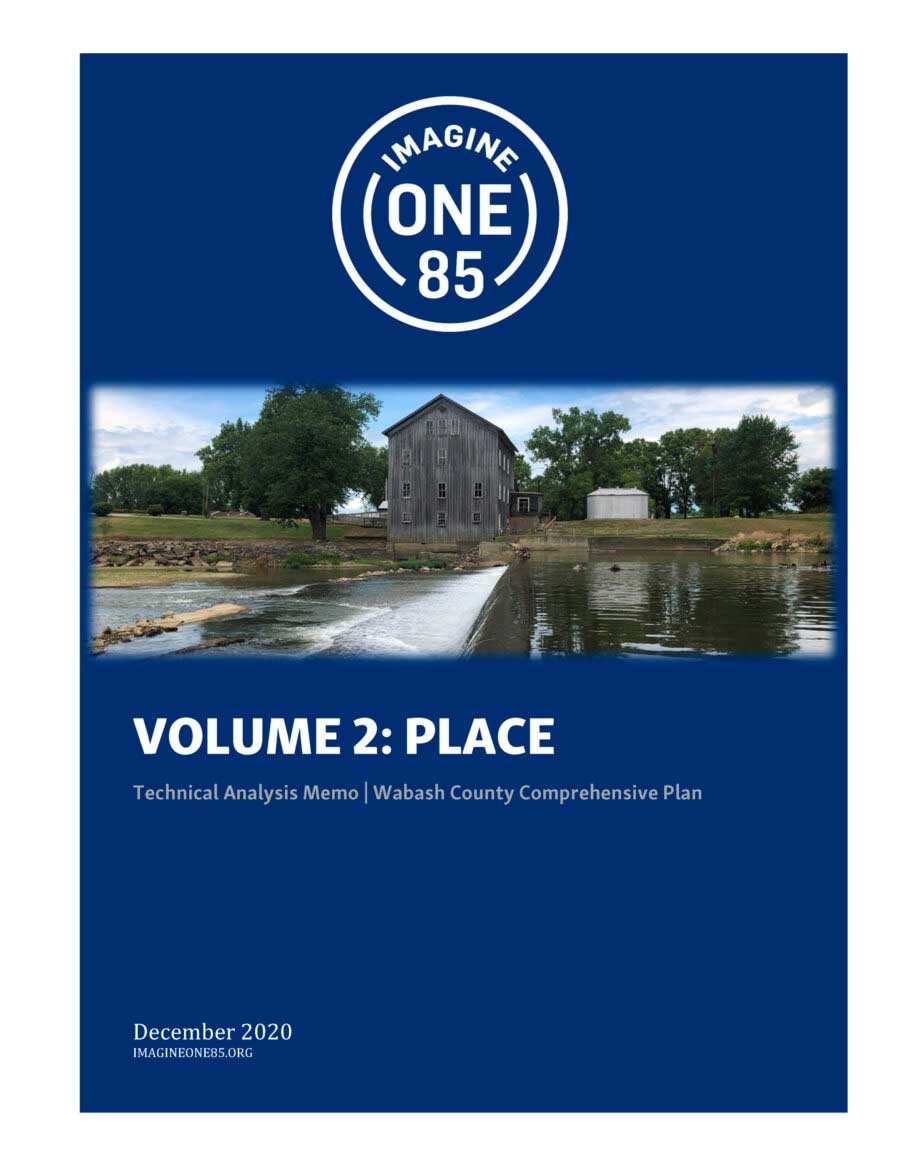Place
The Place Memo provides an analysis across four topics: land use, agriculture, natural resources and parks and recreation, and historic and archeological resources.
Key Findings
- Very little land consumption from 2000. Just over 600 acres of agricultural land was lost to development from 2000. During this same period, the county lost 3,000 residents.
- The current zoning maps identify significant growth areas. Almost every land use (commercial, residential, industrial, etc.) has at least 40% undeveloped land capacity available for future growth based on the current zoning.
- Farms in the County continue to decrease in number but increase in average size. An average farm today is nearly 154% larger than the average Wabash farm in the 1940s.
- Substantial parkland is protected from development. Approximately six percent of the County’s land is protected by local, state, and federal parks.
- The County has a unique network of active preservation partners. Not all counties of similar size and composition have multiple historical societies and an institution like the Honeywell Foundation.
Place
Land Use
Land use reviews the existing conditions of the built and natural places across the communities of Wabash County. Through this analysis, a comprehensive inventory was established of the various types of land uses and how much is present today to establish a baseline for future development growth. This section details the existing community character – another method for assessing the county’s land use profile – found throughout the county, evaluates the zoning framework that regulates land development, assesses current growth potential for specific land uses, and identifies assets to incentivize and leverage community investment. The final section of the topic provides an analysis of the county’s land cover patterns and changes over time.
Key Findings
- A diverse collection of places from urban to rural to natural. There are ten unique place types in Wabash County ranging from natural parkland to historic/urban downtowns.
- Very little land consumption from 2000. Just over 600 acres of agricultural land was lost to development from 2000. During this same period, the county lost 3,000 residents.
- Agricultural land dominates in terms of overall land use. More than 82% of the county is used for farming operations. These uses include cultivation, livestock, along with other processes.
- The current zoning maps identify significant growth areas. Almost every land use (commercial, residential, industrial, etc.) has at least 40% undeveloped land capacity available for future growth based on the current zoning.
- Industrial development capacity is substantial. An estimated 71% or just over 4,080 acres of industrial zoned land is available for future development.

Agriculture
Agriculture takes a closer look into the primary type of crops and livestock that are produced throughout Wabash County. This is achieved through evaluating the current enabling infrastructure and identifying some of the emerging trends in farming that can be leveraged.
Key Findings
- Farms in the County continue to decrease in number but increase in average size. An average farm today is nearly 154% larger than the average Wabash farm in the 1940s.
- The market value of agricultural products sold has experienced a drop off in recent years. The County’s average market value of products sold per farm fell 27% between 2012 to 2017.
- Local farmers are on the forefront of the Farm-to-Fork movement. While distributing products directly to restaurants is viewed as an emerging trend, a number of Wabash farms have already been doing this for decades.
- Relatively little farmland was lost to development over the past 20 years. Based on a land cover analysis, just over 600 acres moved from an agricultural use to developed from 2000, roughly equivalent to the size of downtown Wabash.

Natural Resources / Parks and Recreation
This section reviews the natural resources and other unique places that have naturally defined the character of Wabash County and its communities. Along with this are the parks and recreation assets the county has developed to connect and expand the greenway and blueway network. Through this analysis, a baseline of the existing conditions is established to understand how the communities leverage these assets. This section details the natural resources available, examines existing programming, reviews the relationship between the natural and manmade, and identifies efforts to enhance natural assets.
Key Findings
- Community parks are provided at all levels. From the local to the regional, parks and open spaces are provided throughout the communities of Wabash County.
- Rivers are a major community asset. Several communities from Wabash to Roann have direct riverfront access to one or more of the county’s river corridors.
- Substantial parkland is protected from development. Approximately six percent of the County’s land is protected by local, state, and federal parks.
- Agricultural production has a strong relationship with the environment. Farming practices directly impact the health and quality of environmental resources like soil and water.

Historic and Archeological Resources
Historical and Archaeological Resources examines the County’s many cultural assets that contribute to the overall sense of place. This section assesses preservation efforts that have taken place within the county and highlights some of the organizations that are spearheading this important work.
Key Findings
- Wabash communities are active advocates for their history and their landmarks of historical significance. The first landmark in the County to make it on the National Register was listed in 1979.
- The County has a unique network of active preservation partners. Not all counties of similar size and composition have multiple historical societies and an institution like the Honeywell Foundation.
- Historic assets play an important role in reinforcing community identity. Unique events such as the four-day Roann Covered Bridge Festival demonstrate how landmarks add vibrancy to the communities of Wabash.


.png)
